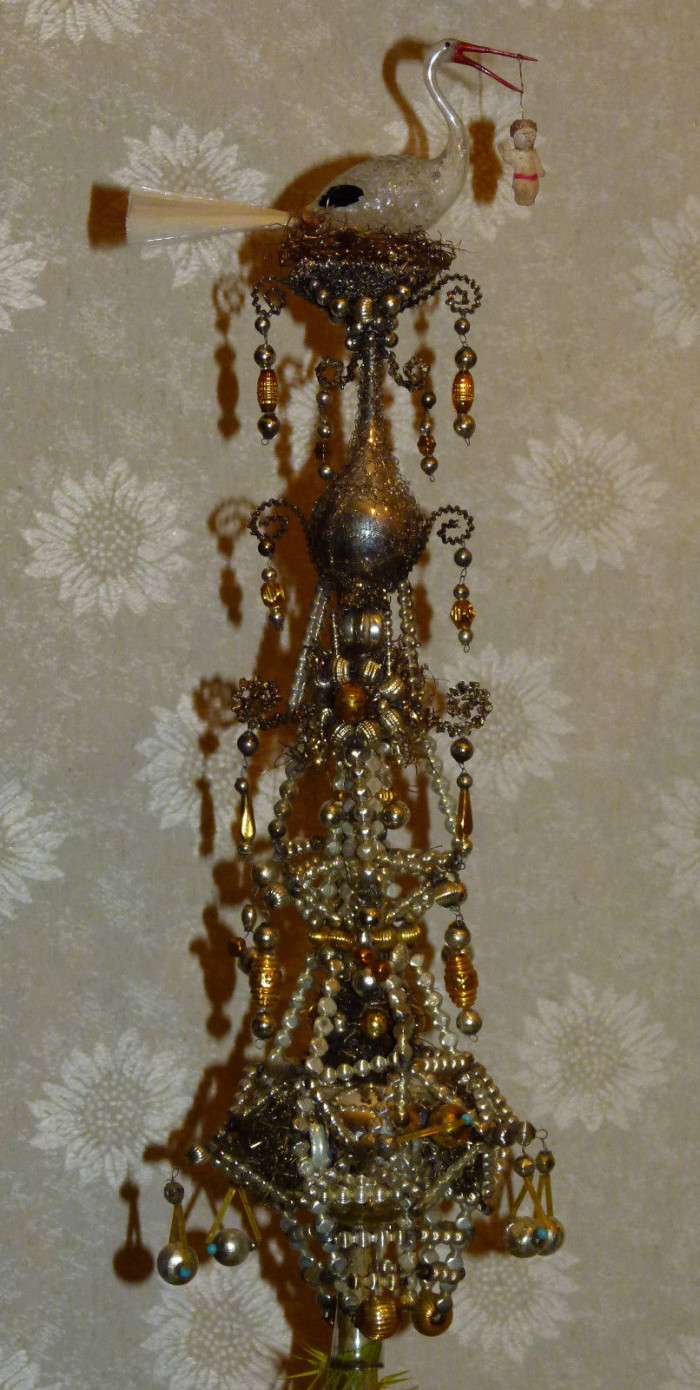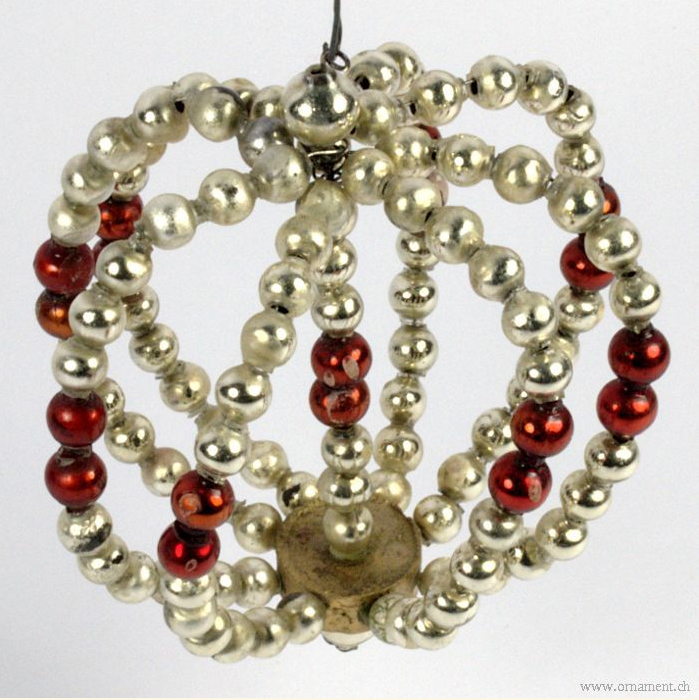
Beaded ornaments were once all the rage and were a highly sought after European import. Considered exotic, the American public purchased them by the thousands each year and their popularity lasted for decades. Part of this popularity was in the novelty of the clever designs of the ornaments. The craftsmen who built them did so in a manner that gave the ornaments a semblance of life. When they were hung by thread on a Christmas tree lit with candles, the ornaments were so light in weight; they were able to move on the warm air currents. Children and adults both watched in fascination as the airplane ornaments seemed to soar under their own power and miniature ships sailed on the air. Animals circled, butterflies turned as if searching for flower ornaments. Figures of people danced. These ornaments gave life and movement to the Christmas trees of the past. Now they are sought after not only for their beauty but also as little works of folk art. They are collected for their historical value as well as for the fact that they still fulfill their original function, generations after their creation.
The term “Czech beaded ornaments” refers to ornaments made of glass beads strung on wire and applies to ornaments made with as few as one large single bead, to the incredibly complicated, made with literally hundreds if individual beads on each ornament. They were made throughout Czechoslovakia, mostly in towns near to Reichenberg, Gablonz, and throughout the Thurigin area. There were similar beaded ornaments produced in Bohemia, Prague, Moravia, Silesia, Austria, Vienna, and Germany. Beaded ornaments were also manufactured in Russia and Japan but with a distinctly different look from those created in Europe.
Flat, two-dimensional beaded ornaments were being created in Czechoslovakia as early as 1845 and became quite popular as tree decorations in the early 1900s. They were often designed with “tails” of beads that hung from the lower edge. These ornaments were imported into the US in the early 1900s. The 1920s saw the birth of the 3 dimensional figural shapes that included butterflies and the popular Zeppelin. The use of solid glass rings called “bangles” was also popular. The 1930s saw the demise of the flatter designs and the continual evolution of three-dimensional designs such as baskets with fruit, bicycles, people, and various household items such as spinning wheels. These ornaments were imported into the U.S. throughout the 1920s and 1930s and had small paper tags attached with stated “Made in Czechoslovakia”. Ornaments imported after World War II had larger paper tags with the same message. Ornaments after the early 1950s had tags that often named the company that exported them.

Attempting to date a beaded ornament, without its import tag, can be difficult as very few actual records were kept on their production and most of those records were lost during the World Wars. In the early 1900s several bead manufacturing companies were producing beads and bangles that were purchased as raw material by a supplier. The supplier then resold the beads to a cottage worker, usually women who worked out of their homes in the evenings or in any spare time they could find. These women then assembled the beads into ornaments and sold them to an exporter who in turn, sold them to stores in the United States.
Some bead manufacturing companies produced the same glass bead styles from the later 1800s through the 1950s. Often cottage workers would purchase a large amount of a single style of bead and if the family continued to produce ornaments from generation to generation, a figural ornament made by a woman in 1920 could still be produced by her granddaughter in the 1950s, using the same style of beads and assembly techniques passed down to her. Other exporters employed ornament builders in a more familiar factory setting and paid them in piecework fashion. A few of these export companies still produce beaded ornaments today and often with similar or even exact designs as those used in the 1930s.
Remember as you go to hang these little works of art upon your tree, the chain of people involved in their creation. Think of the miles the ornament has traveled and of the small miracle it has survived the ravages of time to grace your tree now. Try hanging them by thread, near the tips of branches, so the air currents can breath life into them once again.
